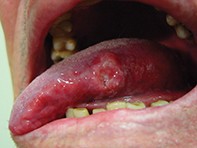Peer Reviewed
Feature Article Ear, nose and throat medicine
Head and neck cancer: a guide to diagnosis and an overview of management
Abstract
Head and neck cancers account for about 3 to 4% of all malignancies. This article focuses on mucosal squamous cell carcinoma, which is the most common type to affect this region of the body.
Key Points
- The major risk factors for SCC of the head and neck are tobacco and alcohol use. The incidence would almost certainly decline significantly if smoking and excessive drinking were eliminated.
- It is important to remember that the majority of persistent neck lumps occuring in adults are malignant.
- Between 1 and 3% of patients who present with a head and neck cancer have another primary tumour somewhere in their upper aerodigestive tract. Therefore, a thorough and comprehensive evaluation is warranted.
- Fine needle aspiration cytology has an accuracy of approximately 95% for diagnosing SCC. Incisional biopsy of a neck node is contraindicated because it may compromise the success of future therapies.
- Treatment of head and neck tumours is often complex. Careful consideration of multiple factors is required to optimise the chance of cure while minimising patient morbidity.
- The majority of head and neck cancers are potentially treatable. However, patients sometimes have severe medical comorbidities or very advanced stage disease which precludes curative treatment.
Purchase the PDF version of this article
Already a subscriber? Login here.

